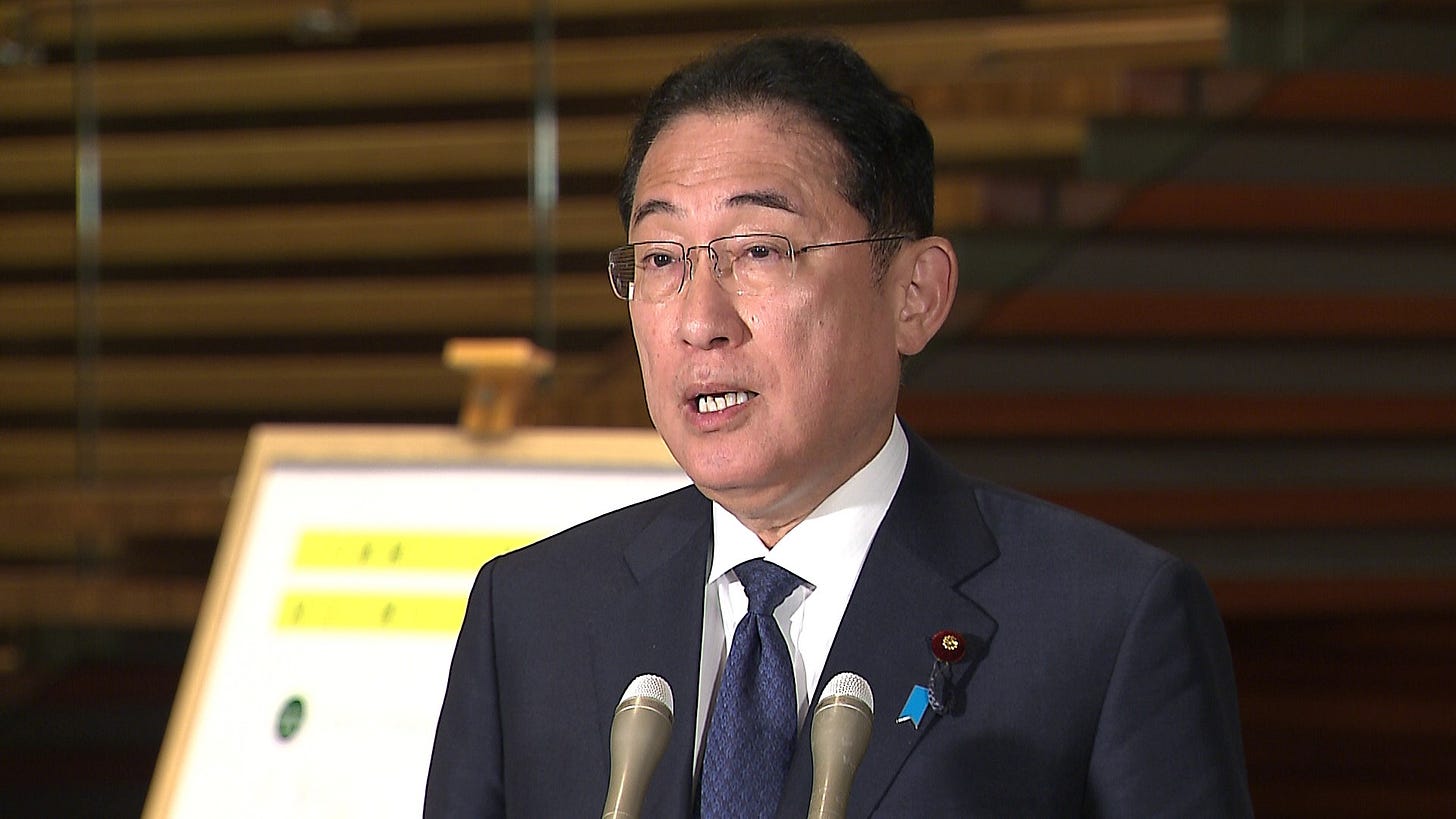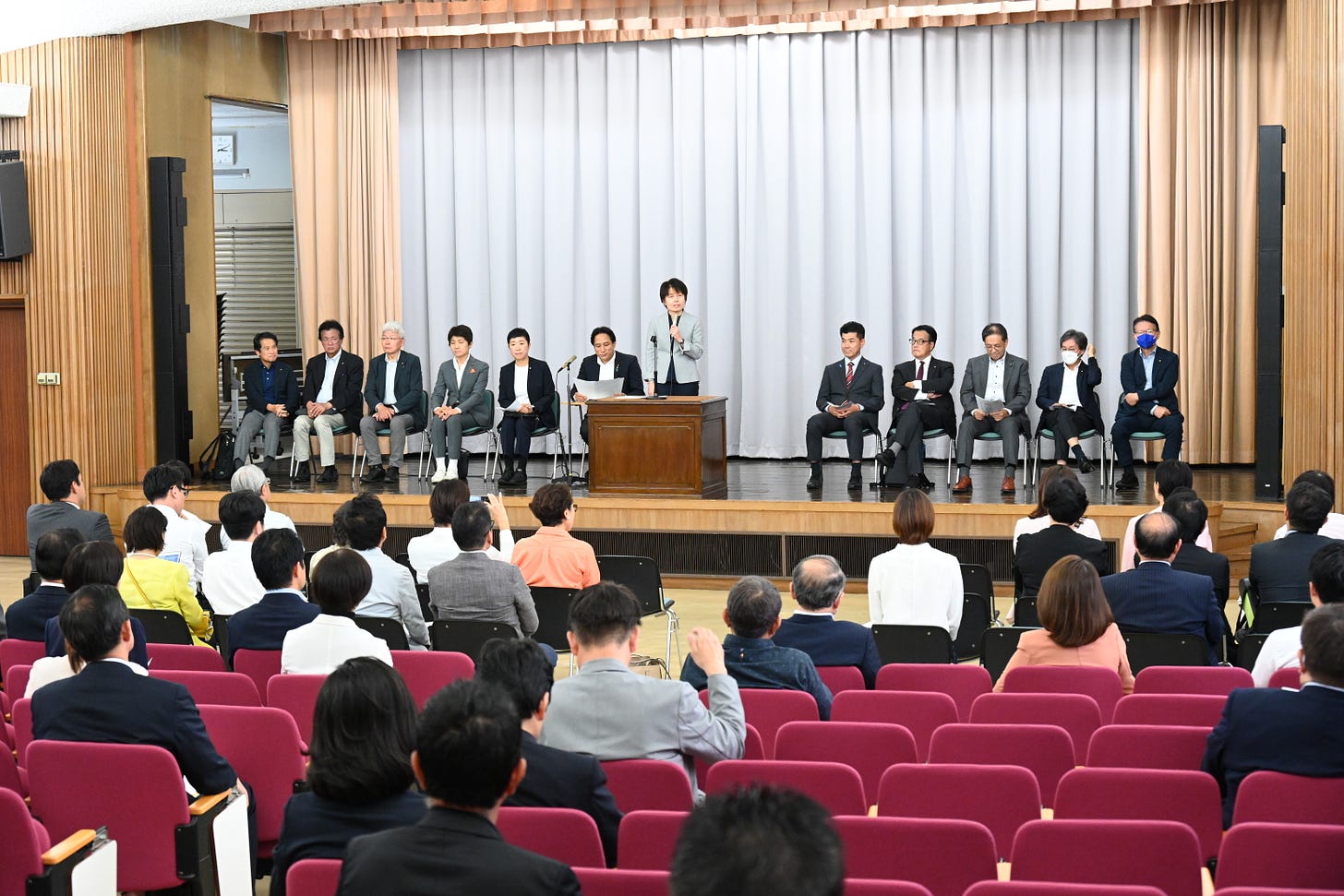Tremors | This week in Japanese politics
An earthquake forces Kishida to cancel a trip, policymakers scramble as financial markets fluctuate wildly, and the government is stuck in the middle of a feud between Nagasaki and the G7 countries
Thank you for reading Observing Japan. “This Week in Japanese Politics” is published on Friday or Saturday for paid subscribers.
If you are looking for timely, forward-looking analysis of the stories in Japans’s politics and policymaking that move markets, I have launched a new service through my business, Japan Foresight LLC. For more information about Japan Foresight’s services or for information on how to sign up for a trial or schedule a briefing, please visit our website or reach out to me.
I will be taking vacation and so This Week in Japanese Politics will be on hiatus next week. There may be other posts depending on events.
The rundown
Prime Minister Kishida Fumio cancelled a trip to Central Asia after an earthquake along the Nankai Trough prompted the government to warn of a possible major earthquake. Earlier in the week, Kishida’s government was shaken by the worst single-day decline in Japan’s major stock indices, which was followed by the largest single-day percentage gain. Government and Bank of Japan (BOJ) officials sought to reassure investors of the basic soundness of Japan’s economy. Meanwhile, the Constitutional Democratic Party (CDP) set its leadership election for 23 September, with one contender already in the race against incumbent Izumi Kenta. The Liberal Democratic Party’s (LDP) race is still taking shape, as Kishida and potential challengers continue to position themselves for the contest. Finally, the Kishida government found itself mediating between the city government of Nagasaki and its G7 partners, whose ambassadors decided not to attend the 9 August atomic bombing memorial after the city did not extend an invitation to Israel. Plus: Tokyo Governor Koike Yuriko heads to the injured list.
Politics

A strong 7.1-magnitude earthquake along the Nankai Trough south of Kyushu prompted the Kishida government to issue its first-ever warning of elevated risk of a megaquake along the trough, which could affect Japan’s Pacific coast up to Tokyo. Residents have been advised to take extra precautions for at least the next week. The quake has already had political consequences. Prime Minister Kishida Fumio cancelled a visit to Kazakhstan, Uzbekistan, and Mongolia planned for 9-12 August, a trip that would have included a summit with five Central Asian leaders in Kazakhstan on 9 August. Constitutional Democratic Party (CDP) Izumi Kenta, meanwhile, cancelled a planned trip to Guam to visit inspect US military bases and talk with US military officials.
On 7 August, Kishida met with the LDP’s constitutional reform headquarters and called for moving ahead on revisions within the year, focusing on proposals to include the Self-Defense Forces (SDF) in the constitution and add state of emergency provisions. Kishida’s interest in constitutional revision is widely seen as part of his bid for a second term as LDP leader as he seeks to shore up support from the LDP’s right wing in particular.

The Constitutional Democratic Party will hold its leadership election on 23 September, with the campaign formally beginning on 7 September. CDP lawmakers and candidates will cast half of the 732 votes in the first round, with local lawmakers and party supporters each wielding a quarter of the vote.
CDP leader Izumi Kenta is preparing to seek reelection, but he will face at least one challenger. Former party leader Edano Yukio said on Friday, 9 August that he would formally enter the race on 21 August. Ozawa Ichirō has stepped up his opposition to Izumi, arguing that he will back someone other than the party leader in the CDP leadership election in September. With more than half of the CDP’s lawmakers from its so-called “fourth generation” – those elected since the Democratic Party of Japan (DPJ) lost power in 2012 – younger lawmakers are eager for a true “generational change” candidate.
Keep reading with a 7-day free trial
Subscribe to Observing Japan to keep reading this post and get 7 days of free access to the full post archives.



